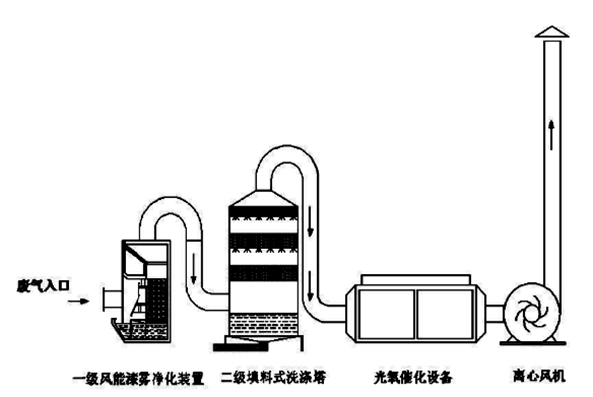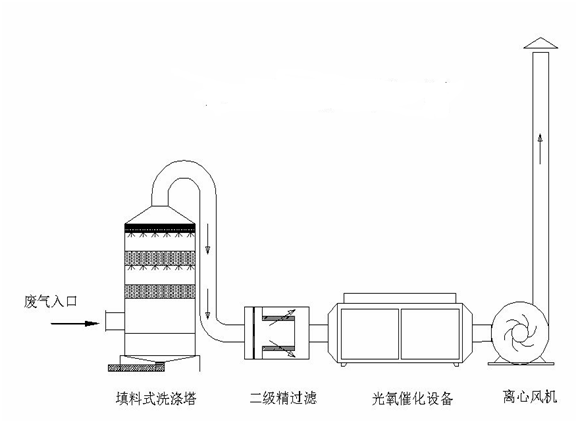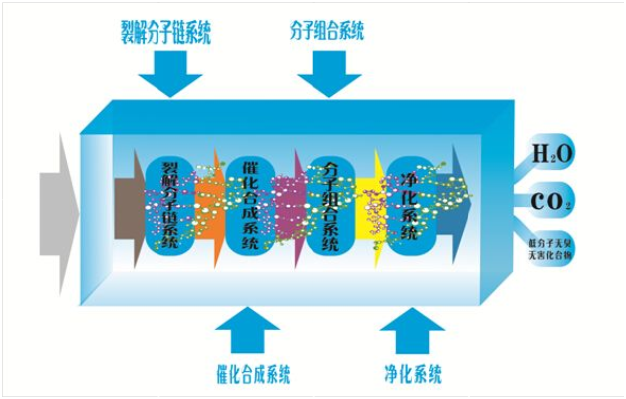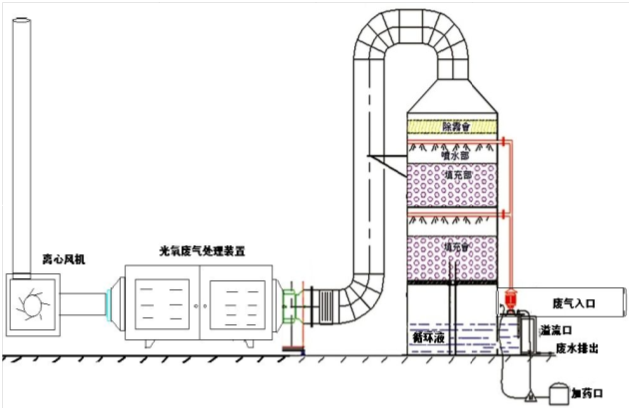Introduction
External structure:
 Process flow:
Process flow:


Process demonstration:

Process description:
(一)、 Pretreatment:
The organic waste gas collected from the workshop contains a certain amount of dust and temperature, if it is not removed and directly enters the photooxygen catalytic device, it is easy to cause dust on the surface of the special UV lamp, therefore, it is necessary to install the water spray filter before the photooxygen catalytic device, and make use of the exquisite structure of the water spray to remove the dust in the waste gas and reduce the temperature effectively, to ensure that the exhaust gas from the fan is effectively intercepted and filtered before it enters the photooxygen catalytic device.
(二) 、Catalytic system:
The photocatalytic oxidation reaction takes place under the action of visible light. The photocatalytic oxidation reaction takes nano-TiO _ 2 and air as catalysts, and light as energy, cracking of organic substances such as ammonia, trimethylamine, methanethiol, methanethiol, methanethiol, butyl acetate, ethyl acetate, dimethyl disulfide, styrene, benzene, toluene, xylene, ketones, esters, and other TVOC organic compounds were degraded to CO 2 and H 2O. In order to purify industrial waste gas and deodorize odor, the company uses artificial ultraviolet light as energy source and nano-TiO _ 2 as catalyst which has the strongest activity and highest reaction efficiency after special treatment.
In the photocatalytic oxidation reaction, the nano-TiO _ 2 catalyst plate absorbs the light energy under the irradiation of ultraviolet light energy at the wavelength of 253.7 nm, and simultaneously generates electron and hole jumps, the electron-hole pair is formed by the strong combination of electron-hole jump and hole-jump, and usually reacts with the H20 and O2 adsorbed on the surface to form the hydrogen-oxygen free radical (OH -) and superoxide ion free radical (O2-, O -) . It can directly oxidize all kinds of harmful gases in the air, such as benzene, ketones, esters and other TVOC organic substances into small molecular substances such as H _ 2O and CO _ 2, since the oxidants used are H2O and O2 in the air, no secondary pollution is produced.

 Process flow:
Process flow: